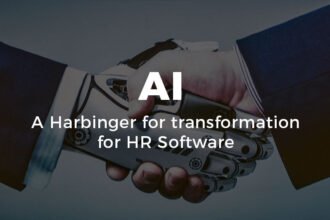Today, in any vision, or mission or whatever else fancy name organizations come up with, you will find one sentence that is always present:
EMPLOYEES ARE OUR MOST VALUABLE RESOURCE
The simplicity of this statement is so striking. It’s so true. It is also very gratifying that almost everyone seems to have realized it. In a normal, logical sequence this should then lead to companies that look after their most valuable resources, and the employees, in turn, reciprocate and it all resembles one large happy family.
Today, in any vision, or mission or whatever else fancy name organizations come up with, you will find one sentence that is always present:
EMPLOYEES ARE OUR MOST VALUABLE RESOURCE
The simplicity of this statement is so striking. It’s so true. It is also very gratifying that almost everyone seems to have realized it. In a normal, logical sequence this should then lead to companies that look after their most valuable resources, and the employees, in turn, reciprocate and it all resembles one large happy family.
But, sadly, this is not the case. Increasingly, a very large proportion of employees think of themselves as free agents who have absolutely no sense of any belonging. People who spend 2 years in the same company are often referred to as dinosaurs and work experience is now measured in months. In fact I have also seen a couple of resumes where it was in weeks.
Why has it come to this? The reason is very simple. The relationship between the company and the individual has broken down. From the organization’s perspective, the workforce resembles a large mob that needs to be reined in. The characteristics of this mob are always viewed as summary statistics. The focus never zooms in on the individual.
It’s the same from the other side as well. Very often, employees think of their organizations as being run by remote faceless robots that live in an ivory tower and come down once in a while only to broadcast unpleasant news to everybody in general, not anybody in particular.
There is an important ritual that takes place in almost all companies that actually could have gone a long way in establishing the relationship I am bemoaning. It’s the one silver lining in the dark cloud that could have ignited engagement and loyalty. Very appropriately, it’s also called the EMPLOYEE SATISFACTION & ENGAGEMENT survey. Vast amounts of resources are expended on running these surveys to get clued into the pulse of the workforce. But, alas, whatever the noble intention behind this initiative, it always bites the dust.
So, what has gone wrong? Again, the same problem. The precious data and information coming from the survey is summarized under layer after layer of organization hierarchy and the results look like nobody’s views in particular. It is the sum total of all the diverse voices boiled down to the lowest common denominator that nobody cares about. Because of this, employees think of the survey exercise as a hogwash and the cynicism that pervades everything else, also envelops this rare opportunity to connect.
So, what’s the way out of this gloom and doom? Not surprisingly, the answer is the same. It’s the survey! But, how will the outcome be any different? The devil, as they say, is in the details.
First, the employee satisfaction and engagement survey should not be done with a frequency that is lesser than Haley’s comet. Satisfaction, engagement and loyalty cannot be injected into the company like the annual polio vaccine. They have to become part and parcel of everyday life. For this, systematic and sustained effort needs to go into establishing a credible listening post for employees. This will only happen if the survey occurrences multiply and therefore the opportunities to engage and connect proliferate.
Second, a lot of care should be taken to preserve the diversity and context to the data and information coming out of the survey. Compressing all of them to massively consolidated simplistic results sucks all the juice out. What remains is the husk. The ability to retain the variance and the unique characteristics of the underlying segments is critical to developing meaningful interventions. A context-aware differentiated intervention strategy based on survey inputs will be a powerful signal to the employees that the company cares about them as individuals and the resulting lift in outcomes will be magical.
Third is the ability to analyze and distil textual comments. A lot of what really matters to employees comes out only in these comments. The ability to intelligently glean out themes that surface from these comments will result in an unprecedented level of depth and insight into the psyche of the employee.
Last, but the most important, are persistence and follow up. They convey that the organization is serious about its employee welfare aspirations and stand out as an unequivocal demonstration of commitment. Designing thoughtful follow up surveys around critical themes customized for at-risk employee segments will salvage even the most hopeless of situations.
The author is a Consulting Services Leader at BRIDGEi2i Analytics Solutions. He can be reached at karthikeyan.damodaran@bridgei2i.com. www.BRIDGEi2i.com






